Minor repair of the monitor stand LG 23MP55A
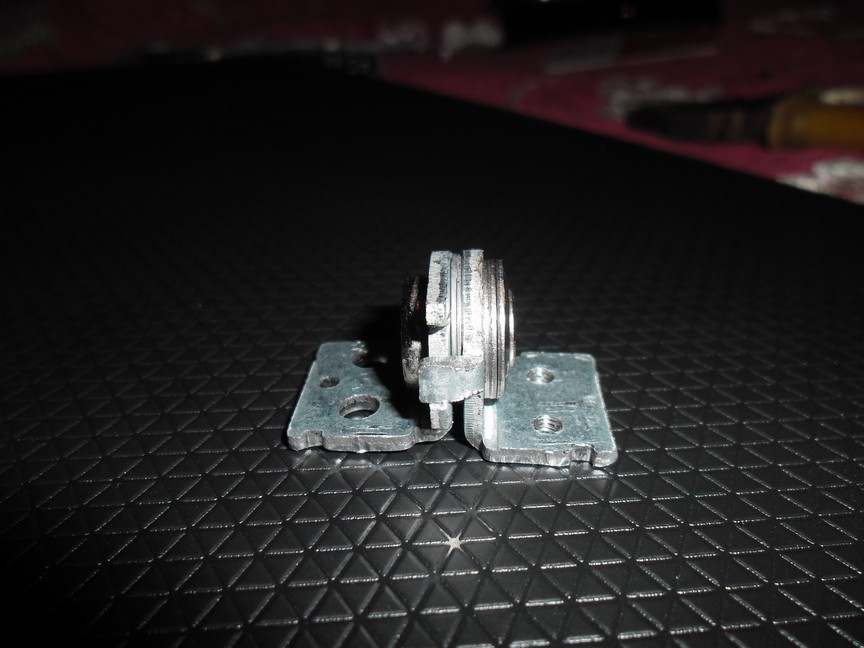
Perhaps in this way I was “lucky" alone, but in the recently purchased monitor, the angle of inclination changed very tightly from the very moment of purchase. When buying, I just checked the monitor: getting and screwing the “leg” somehow did not see the point. In vain, everything should be checked, marriage is present everywhere, and even more so in budget products.
“Nothing, I’ll rub it)”, I thought, and did not go to the store. But after about a month, the “leg” got stuck in such a way that there was no question of adjusting the angle - not knowing the device, I began to fear for the state of the matrix. A call to the store’s service department found that the case is somehow not a guarantee, they can be repaired for money without saving the guarantee on the spot (for money), or they can be sent to an authorized service for examination and wait for the result from them.
If the monitor were more expensive, I would have waited a month or so of his wanderings round-trip, but since the monitor is inexpensive and I’m not used to working on the old one, I decided to fix it on my own. Maybe the "Chukchi" is a bad seeker, but I did not find a service manual with disassembly - therefore, anyone interested in how to carefully disassemble this product - I ask for a cat.
In modern technology, oh, like latches, and even more so - plastic ones. This model is no exception - the case on latches. To leave the product in a “salable” appearance, I recommend acquiring special plastic picks, but you can get by with improvised means - a plastic card. The latches in this model turned out to be enough, and they are quite wide - therefore, apart from the card, I also had a chance to “help” with a screwdriver. The “autopsy” should start from the control buttons - there are fewer latches and it will be easier to pry off, and move from them to the left, it turns clockwise.

You need to “unfasten” the latches carefully, without trying to tear off the top cover - otherwise you can damage several loops inside. Namely, the wires to the control buttons, the power of the LEDs and the matrix cable itself will hold us back.
In order - the control buttons are easiest to get right from the board by bending the holding plastic latch.

Next, turn off the backlight, the easiest way is to slightly raise this connector with a thin screwdriver - then it will turn out to catch on.

After disconnecting, gently pry and peel off the adhesive tape from the matrix cover.
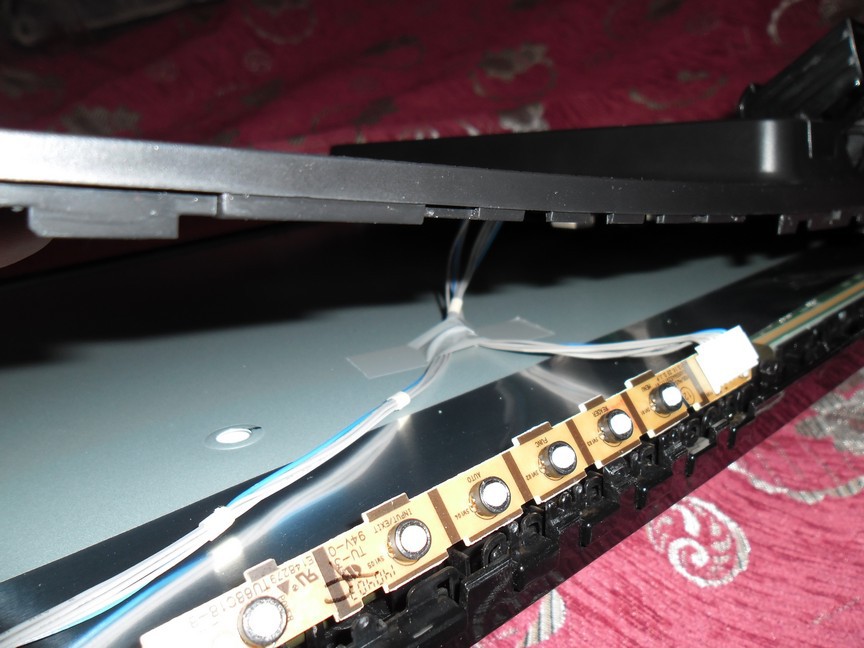
The loop of the matrix is fastened with rag tape already - it holds tight, so we carefully approach the process so that it does not break abruptly and does not damage the loop.
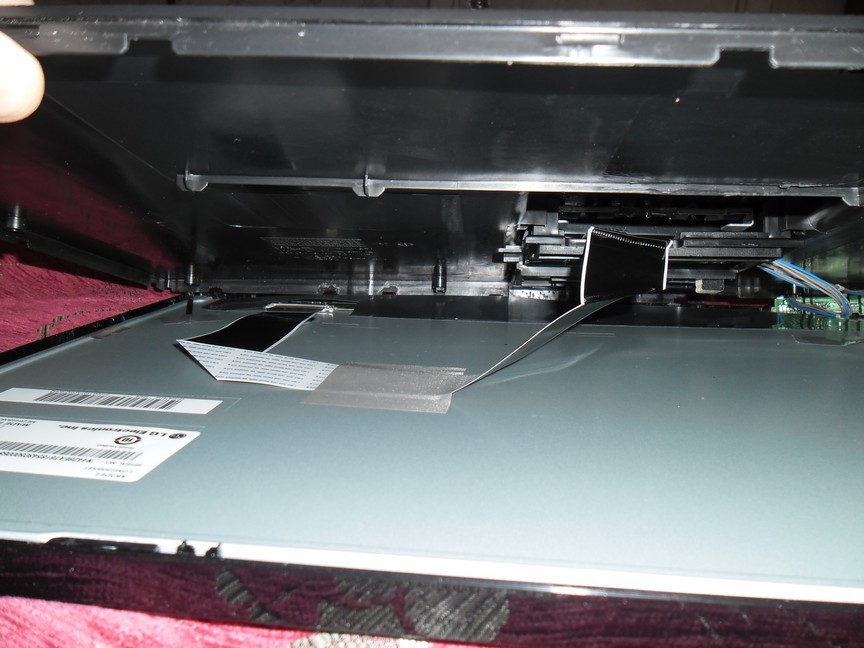
To disconnect the cable, we press the fixing "antennae" on the sides and with a slight movement of the hand we disconnect.
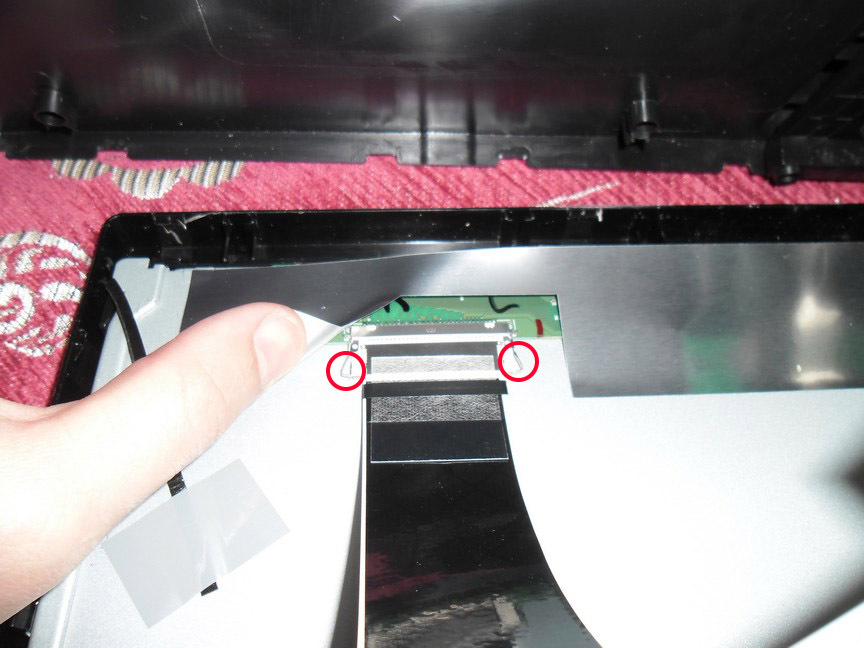
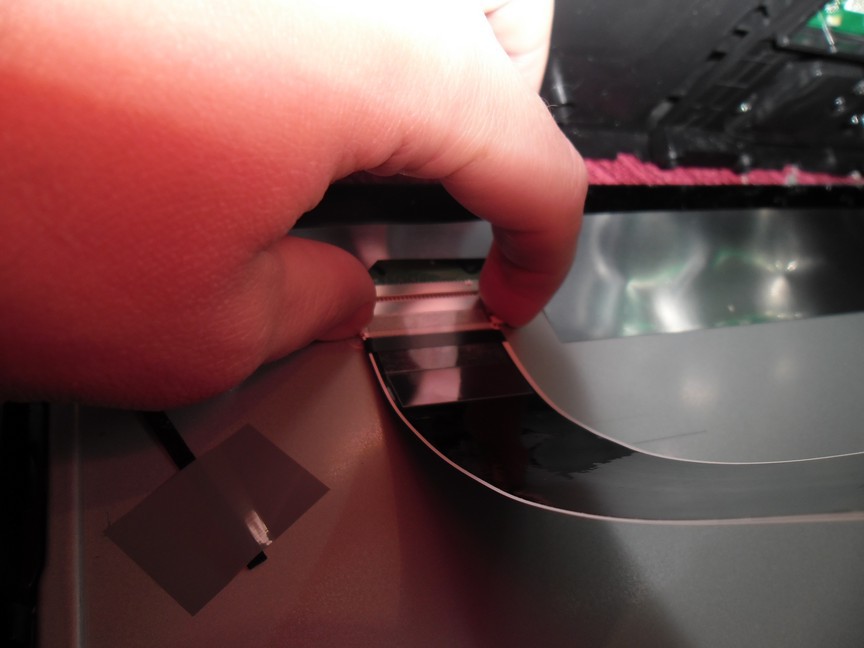
Now the back cover can be confidently removed. To approach the rotary mechanism directly, remove the central board with a plastic frame - for this you need to unscrew the screw from the back.
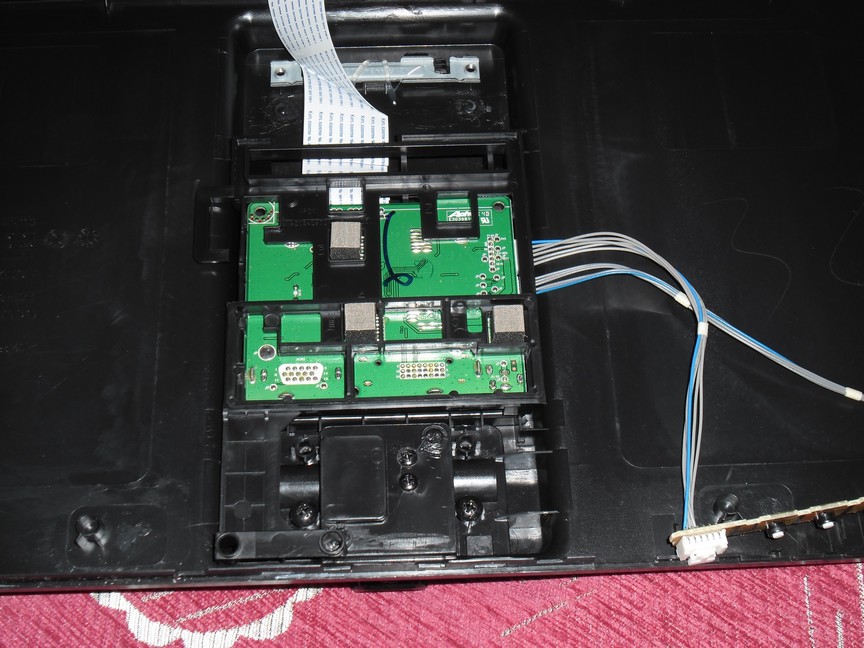
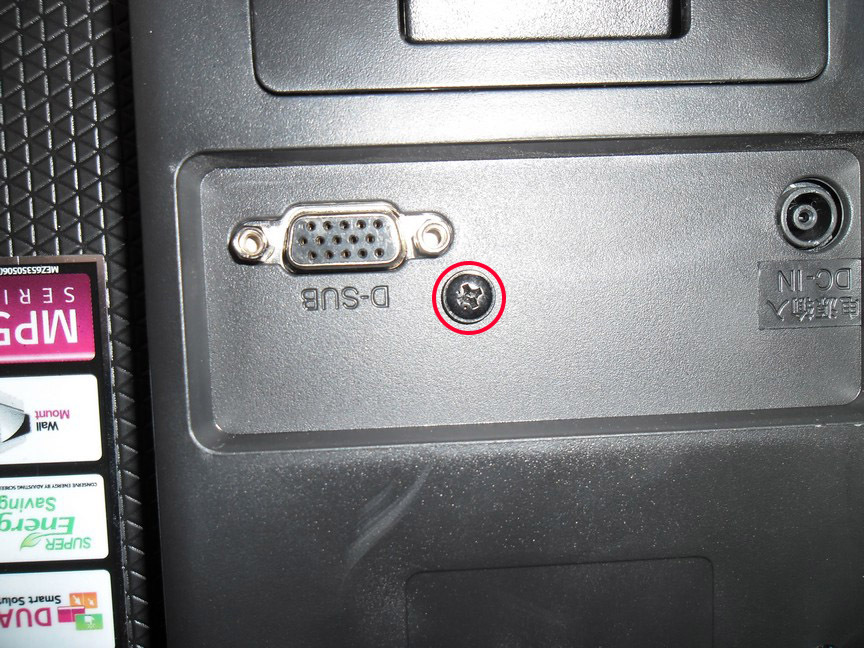
Here we see the miracle of engineering and saving - VESA-mount. I understand that the device is budgetary, and even though the monitor is quite light - I would not hang it on the wall.
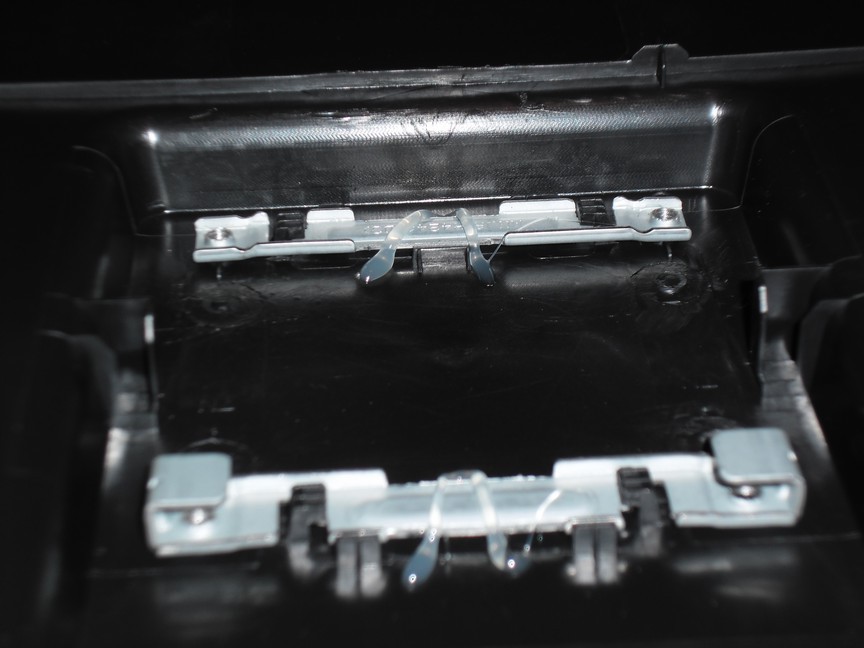

Then we twist all the screws and get to the culprit of the "triumph". As you can see in the photo - the attachment site for about a month of use was badly battered, even surface cracks went. Savings crazy - the inclined mechanism rests on the thin plastic body. And if you have similar problems with a tight slope - hurry to solve the problem. I forgot to take a picture, but I put wide washers in the place of attachment, which allowed to increase the contact area - thus, the probability that with the next adjustment the screw caps stupidly “break” the plastic became smaller. The solution is not ideal, perhaps in the future I will replace it with metal inserts, but for now - even if only so.



The rotary mechanism itself, as we see, is two corners riveted together. Turning them with two pliers was not easy. A drop of oil and loosening did not solve the problem. I was thinking already to drill a rivet and replace it with a bolt, but there were no suitable ones, as well as the growers themselves. And all the same, such a fastener would spin up after a while.
Therefore, another way was chosen - I just heated this corner on the stove and swaying, cooled it with water. After that, we wipe it, you can dry it over the fire, give a drop of oil - and we get smooth regulation with an adequate effort. And though the corner doesn’t look very (I didn’t particularly clean it), we don’t have to look at it, the main thing is that it works as it should!

We put the mount in place, assemble the monitor (in the reverse, as the sequence says) and - voila, it works as it should from the very beginning, or even better).
Great if this article helps someone.
